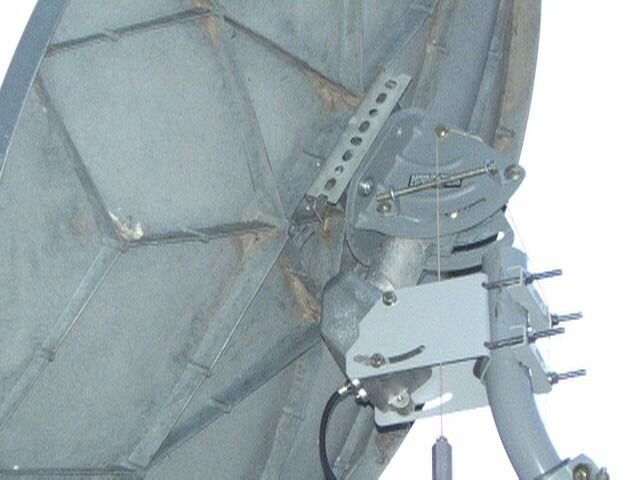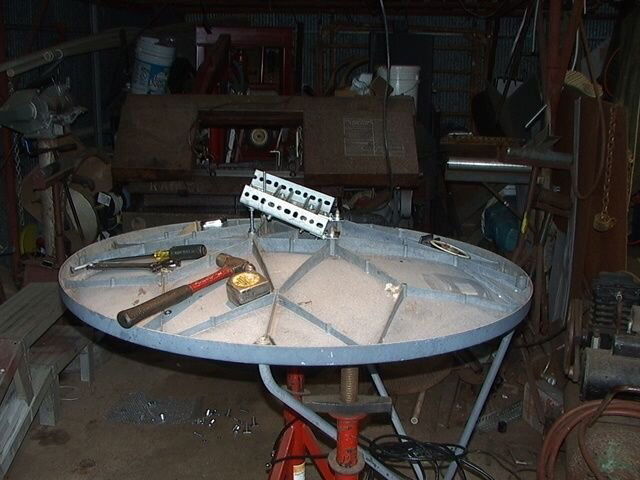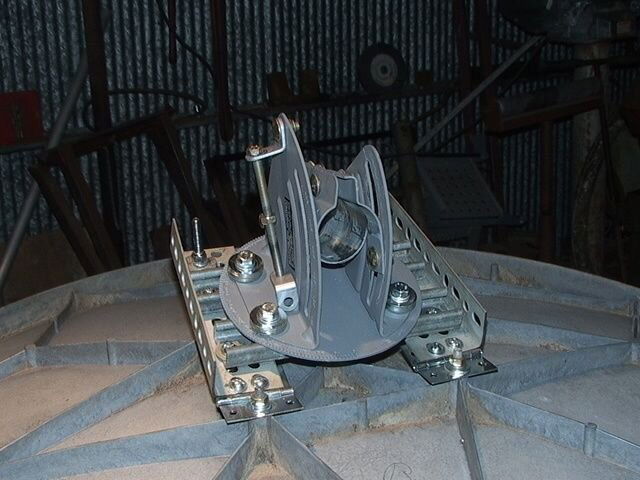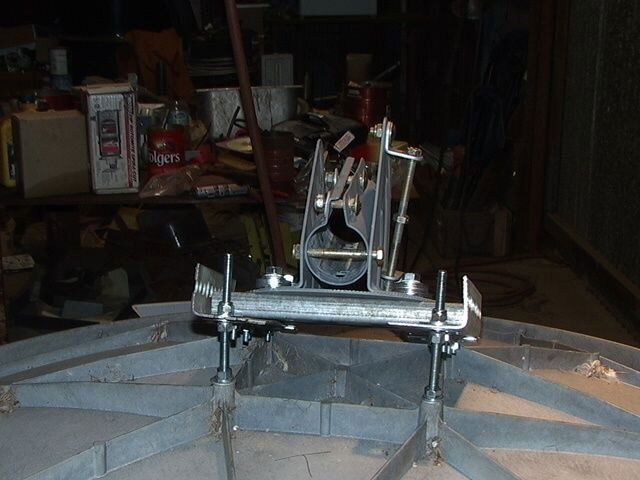Dish elevation help
- Thread starter ccrocket
- Start date
- Latest activity Latest activity:
- Replies 19
- Views 4K
-
HAPPY NEW YEAR! EXCITING CHANGES COMING IN 2026!
Thank you for a great 2025 and we are so looking forward to 2026!
PLEASE CLICK HERE to find out about some of our plans for 2026 including our BRAND NEW NAME we will be moving to in 2026! Exciting times are ahead!
Happy New Year from your friends here at SatelliteGuys.US!
You are using an out of date browser. It may not display this or other websites correctly.
You should upgrade or use an alternative browser.
You should upgrade or use an alternative browser.
- Status
- Please reply by conversation.
Found this. It is easy to set up the elevation angle accurately, using:
(a) a scale marked on the mount bracket. This is almost essential for 'offset antennas' with the feed at the bottom on an arm. Make sure the pole mount is vertical using a bubble level or weighted string in two positions at right angles around the pole. The offset angle may be documented in the installation instructions.
(b) using an inclinometer. These typically have a bubble level and a rotary scale marked in degrees. Think about low angles (near zero), the 45 deg half way angle and high angles (towards 90 deg) and make sure that your scale readings make sense. You may need to add or subtract 90 or 180 deg and even to read the scale backwards. If you are using an axi-symmetric dish the back of the dish is normally at right angles to the beam and there may be some suitable flat part where you can apply the inclinometer.
(c) If you don't have an inclinometer then make one using a piece of card, a length of cotton and a small weight (small metal nut, for example). Make a hole near one edge and insert the thread so that the weight dangles across the card. Draw on the card the exact elevation angle required using a school compass or two lines at right angles and trigonometry (tan function suggested) at Start, Programmes, Accessories, Calculator, Scientific mode. This kind of home made device can be far more accurate that a small inclinometer sold in a DIY store. For large dishes a long plumb line can be used and sideways measurements used with tan tables to determine angles accurately
(a) a scale marked on the mount bracket. This is almost essential for 'offset antennas' with the feed at the bottom on an arm. Make sure the pole mount is vertical using a bubble level or weighted string in two positions at right angles around the pole. The offset angle may be documented in the installation instructions.
(b) using an inclinometer. These typically have a bubble level and a rotary scale marked in degrees. Think about low angles (near zero), the 45 deg half way angle and high angles (towards 90 deg) and make sure that your scale readings make sense. You may need to add or subtract 90 or 180 deg and even to read the scale backwards. If you are using an axi-symmetric dish the back of the dish is normally at right angles to the beam and there may be some suitable flat part where you can apply the inclinometer.
(c) If you don't have an inclinometer then make one using a piece of card, a length of cotton and a small weight (small metal nut, for example). Make a hole near one edge and insert the thread so that the weight dangles across the card. Draw on the card the exact elevation angle required using a school compass or two lines at right angles and trigonometry (tan function suggested) at Start, Programmes, Accessories, Calculator, Scientific mode. This kind of home made device can be far more accurate that a small inclinometer sold in a DIY store. For large dishes a long plumb line can be used and sideways measurements used with tan tables to determine angles accurately
Starting point would be to set the motor angle according to your latitude, I believe. That way it tracks the right arc for your latitude. After that, you only want to add or subtract elevation between the dish itself and the motor, to raise or lower that arc.
I set my motor up at 40 degrees angle, based on the 50 degrees of latitude we are at here in Winnipeg. From there, I pointed it south, and set the angle of the dish to give the strongest signal on IA5 which is on the same longitude as us. I completely ignored what angle the dish is "supposed" to be at, and simply found the angle that worked. The dish ended up being at 6.5 degrees from vertical, which must have produced the 32 degree angle necessary for the IA5 sat which is my due south sat. Maybe the angle marked on the dish bracket is "correct", maybe its not, but in the end isn't it the results that matter?
On some motors the mounting tube points up....
http://www.sadoun.com/Sat/Products/STAB/HH100-Stab-HH-Diseqc-USALS-Motor.htm
And some point down....
http://www.dmsiusa.com/sg2100.htm
http://www.sadoun.com/Sat/Products/STAB/HH100-Stab-HH-Diseqc-USALS-Motor.htm
And some point down....
http://www.dmsiusa.com/sg2100.htm
I think you would need a length of wood and place it across the face of the dish (up and down) Really you would have had to have done it before the modification. You could have set the dish at say 30 deg. take a reading with the inclinometer add or subtract to give you the 30 deg.
I would use the signal to point the dish and get the correct elevation/declination setting, use a strong signal to start and you will not be far away!
I would use the signal to point the dish and get the correct elevation/declination setting, use a strong signal to start and you will not be far away!
I took a reading off my dish before mounting it on a motor. It read 6.5 degrees from vertical when pointed at a 32 degree high satelite. I am told that offset dishes have a 20 some degree "offset". When I remounted it on the motor, I moved it back to 6.5 degrees and found my satellite easily. I measured off the LNB arm where it mounts on the back of the dish mount.
- Status
- Please reply by conversation.
Similar threads
- Replies
- 7
- Views
- 1K
- Replies
- 159
- Views
- 6K
- Replies
- 1
- Views
- 617
- Replies
- 4
- Views
- 950
- Replies
- 8
- Views
- 530
Users Who Are Viewing This Thread (Total: 0, Members: 0, Guests: 0)
Who Read This Thread (Total Members: 1)
Latest posts
-
Any '25 Black Friday Peacock Deals?
- Latest: comfortably_numb
-
-
I






